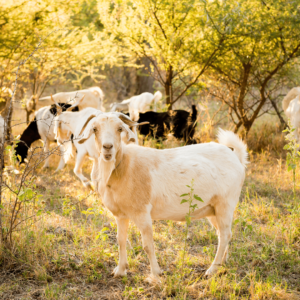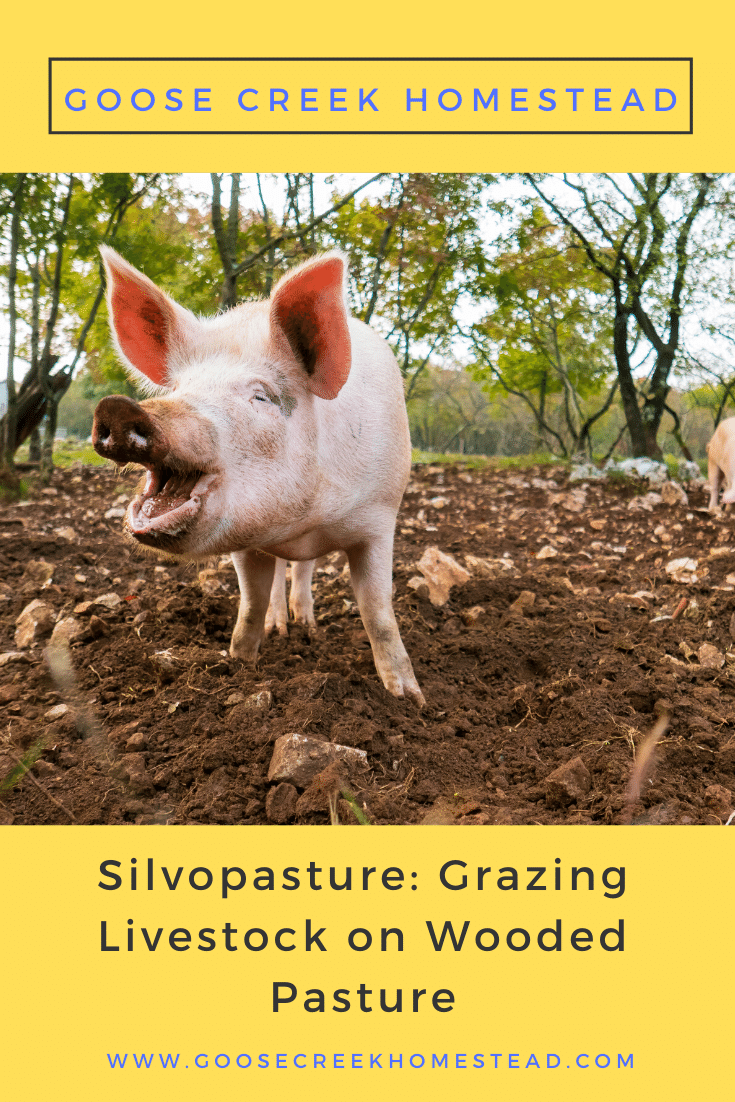Cattle, pigs, goats, and other livestock can all thrive on wooded pasture. Here’s how to establish, graze, and manage silvopasture on your homestead.
When you purchase rural land for a farm or homestead, there’s a good chance that at least part of that land will be wooded. The chances of finding affordable land with spacious, open pasture for grazing livestock are pretty slim. But, the good news is, livestock can indeed be grazed on wooded pasture. In fact, using wooded areas for grazing even offers some advantages that you may not have considered.
The term “silvopasture” is becoming more commonly recognized, and basically, it means that you are using wooded acreage with forage and trees as pasture for your livestock. The trees in the pasture provide much-needed shade and shelter for your animals, as well as forage. The trees can also be managed by thinning them out for use as firewood or even logs for building.
Dairy farmers in the northeast have grazed their cows on wooded pastures for generations. They used to call it “making milk from the woods.” Sadly, farmers were pushed to go big or get out of the business after World War II, and silvopasturing became almost obsolete. Many “experts,” especially foresters, began recommending against the practice, and cow nutritionists began urging farmers only to graze their cattle in open fields.
The Benefits of Establishing Silvopasture
Silvopasture has many benefits that are not provided by open pasture.
A More Comfortable, Cooler Environment for Animals
Animals love the shade on hot, summer days. Goats, cattle, pigs, and even bison are just a few types of livestock that can be raised on silvopasture. In fact, pigs must have shade because they cannot sweat, which means they can overheat very quickly. Putting a pig in a pasture without adequate shade would most likely cause death from heat stress.
But, other types of large livestock will enjoy grazing in the cooler environment, too. And, the trees provide shelter from strong winds and beating rains. You’ll still need to provide a sheltered place for them to go during extreme weather, but they will be much less exposed than livestock kept in an open pasture.

It Can Provide a Second Source of Income on the Same Area
Raising timber and grazing livestock on silvopasture go hand in hand. The timber will likely grow faster because it’s being fertilized by the animal manure. And, when you plant forage for your animals, you can plant nitrogen-fixing legumes that will benefit the trees even further. Raising timber and livestock in the same area is a great way to diversify your income.
Silvopasture is the Perfect Environment for Goats and Pigs
If you plan to raise goats or pigs on your farm, they will do very well on silvopasture because they are browsers by nature. The goats will go through and eat all the vines, shrubs, and undergrowth that competes with the trees for nutrients. And, pigs are right at home in the forest. They can help you renovate a wooded area and get it ready for planting forage by loosening up the soil with their rooting.
You Can Grow More Nutritious Forage for Your Animals
Cool-season, shade-tolerant plants can be planted under the trees in your silvopasture. These types of forages are usually more nutritious for animals than forages grown in full sun.
How to Establish a Silvopasture
When choosing an area for your silvopasture, location is essential. The area needs to have a gentle terrain. It doesn’t have to be completely flat, but steep hillsides should be avoided. You should also avoid boggy areas and wetlands. You want the area to have water available to sustain plant life, but it shouldn’t be muddy or soggy.
Once you’ve chosen the area you plan to use as your pasture, there are some things you’ll need to do to prepare it for animals to graze. Begin by getting rid of any low-quality saw logs, such as hemlock and pine. Carefully inspect the area for any poisonous plants that could be dangerous to your livestock and remove them. Then, cut out all the brush and undergrowth around the perimeter of the area and run your fencing.
Remember, no forage crop will grow under a full canopy of leaves. Large branches must be trimmed away to let sunlight in, and trees may need to be completely cut down to thin out very thick areas. In the coming years, as you continue thinning out the trees to use as firewood, you will open up the pasture for more grass and forage to grow.

Surprisingly, several forage options will grow in silvopastures. Orchardgrass is an excellent choice because it’s right at home underneath the trees. Tall fescue could also do very well, but it has a lower forage value. Some other forage options could be annual brassicas, ryegrass, and clovers, depending on what grows well in your area and what types of livestock will be grazing on the land.
Advice for Managing Silvopastures
Here are some tips and advice for managing silvopasture on your small farm or homestead.
Be Careful Not to Overcrowd the Space
Avoiding overcrowding is especially crucial with silvopastures because if there are too many animals grazing in too small of an area, there will be damage to the bark and roots of your trees. If you plan to open the pasture up and thin out the trees, this probably isn’t a big deal. However, if you want to keep the trees healthy and growing, it’s best to keep the number of animals grazing in that area to a minimum.
Don’t Graze Silvopasture When it’s Muddy
If your wooded pasture is on a hillside, try not to graze it in the spring and fall when the ground is wet and muddy. Large animals like cows might damage the roots of your trees which could lead to erosion.
Establish a New Patch of Grass Each Year
Each year, thin out the trees in crowded areas to use as firewood. As you open up new areas, plant some grass seed in that spot. Eventually, you will have a gorgeous landscape of green grass shaded by healthy, beautiful trees.
Some Final Thoughts
If you’re interested in permaculture, silvopasture is an excellent choice for working with your land. By planting cool-season perennials underneath the trees, you’re working in tandem with the natural growth cycles of the trees. Just be sure to monitor the area closely to make sure the animals aren’t being too destructive. Rotational grazing is always a good idea, whether your pasture is open or wooded.




